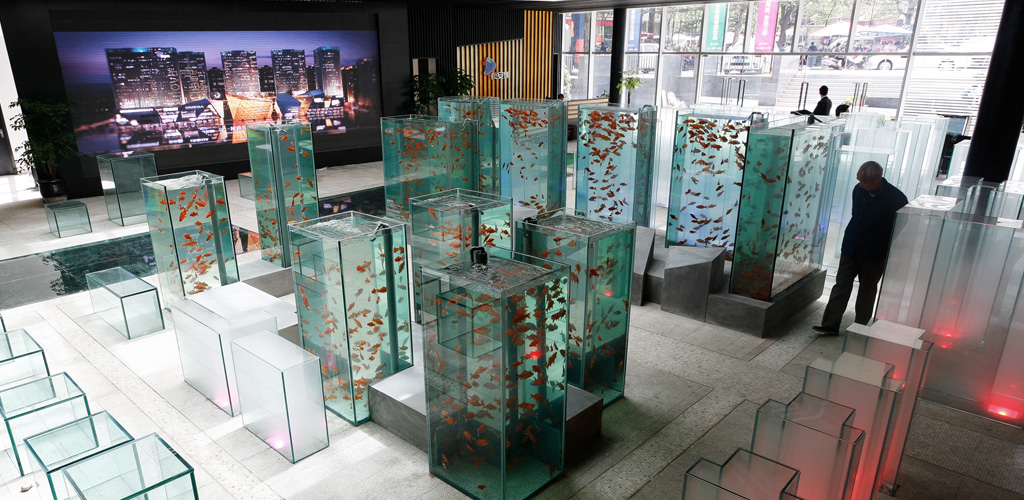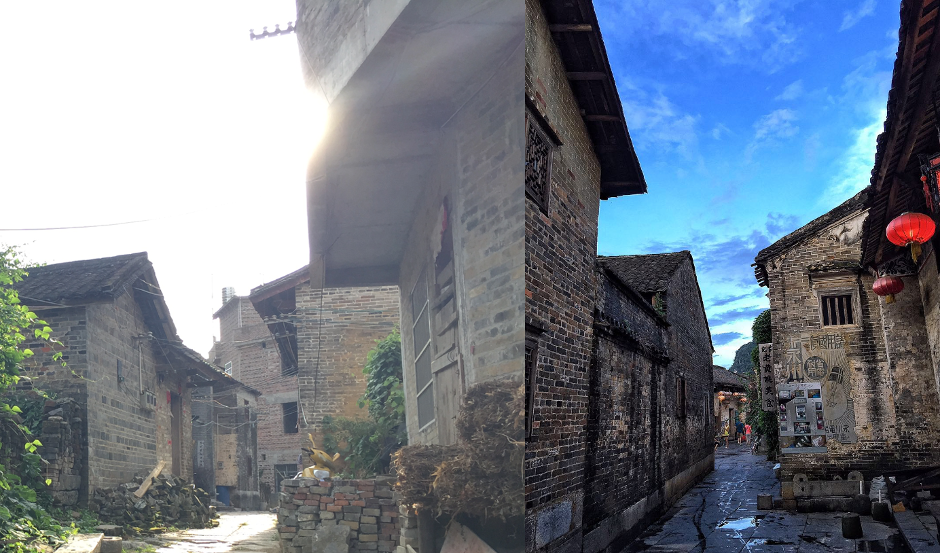The following contribution explores some of the author’s experiences of living in three of China’s coastal cities, introducing the origins of the ideas that led to his PhD project that examined the Chinese state in both historical and spatial terms and interrogated how state space continues to be imagined as something tangible and real. It reveals some of the difficulties of doing research on a subject which seems to be obvious, but is yet so little explored, writes Marijn Nieuwenhuis.
I have spent two years in China, but I visited the country on three separate occasions. The first time, in 2006, was as part of a field trip with the University of Manchester’s Institute for Development. We visited the famous wonders of industrialisation that comprise the so-called ‘Pearl River Delta.’ It is difficult not to be overwhelmed by the size and pace of development in and of cities such as Shenzhen, Guangzhou and Dongguan. The vertical architecture dominating the city skylines left a lasting impression on me and my fellow postgraduate classmates. Most of us grew up in provincial Europe and Sub-Saharan Africa where height is more often than not the long process of geological evolution. Mountains in the ancient Greek world constituted the natural boundaries between different political spaces. Cole (2004: 13) writes that the “delineation of political space was expressed more forcefully by military defence of cultivated plains lying between mountains than by control of population centres.” The geographic imagination of and fascination associated with the mountain seems in contemporary China to have been transplanted by an imagination that privileges the politics embedded in the verticality of the skyscraper. The verticality of the skyscraper is one that is different from that of the mountain. The skyscraper’s human-designed architecture, ultimately unhumanly proportioned, serves an immediate and instrumental political purpose in contrast to the natural formation of the mountain.

Skyscrapers are the epitome of urban modernity. Battling with the heavens above them, they symbolise the ultimate human attempt not to control, but to overrule the workings of nature. These leaden pillars, on which modernity paves its seemingly solid foundations, evaporate however into thin air as soon as the fleetness and ephemerality of capital becomes apparent. This does not make the tangible social effects of skyscrapers less real. They socially and politically mirror the divisive forces that both buttress and symbolise our unequal societies. Those absorbed in the steel belly of the monster feed it to still their own hunger for status, while those left outside become the excluded, the disqualified, and the lesser worthy. It was painful to have to have to witness the thousands of rural migrant bodies that surround the nightly “solitudes of skyscrapers and pavements” (Ginsberg 2007: 142). I was privileged enough to hear their stories. I listened to accounts of discrimination against those that still relied on a more earthly connection to the soil. Others spoke of the coldness of the stones underneath the feet of the machines of power.
The encirclement by high-rises had also a psychological effect on the well-being of my classmates at the time. Several of us suffered from symptoms of acrophobia, literally: the fear of heights, and expressed feelings of dizziness, nausea and some even showed signs of existential derealisation. The ‘shock-and-awe’ architecture left similarly an unsettling, albeit more curious, impression on me. I wanted to understand the causes for the violence that such productions of space inflicted. I wanted to comprehend the forces of ‘creative destruction.’ I returned four months later to China to teach English at Jiangnan University (Wuxi). Several months later, I got employed as a consultant for a German-sponsored ecological urban planning project in neighbouring Yangzhou and Changzhou.
In China one is, at least I was, almost immediately struck by the importance and involvement of the local and national state in the organisation and reproduction of vertical space. Municipal governments seem to compete over the number, height and architectural outlandishness of their skyscrapers. There has recently even been launched a specific Chinese website to award the most bizarre (or ugliest) urban transformations of nature. Questioning the underlying reasons for the (re)production of space continued to fascinate me during and after my time in Changzhou and Wuxi. They were ultimately conducive to my decision of commencing a doctoral project on the subject of China’s geography. My thesis, which focused on the relationship between, what Henri Lefebvre calls, the ‘concrete abstraction’ of the state and the modes of production, was written however in a place which bears no resemblance to coastal China.
The West-Midlands, the home of the campus-based University of Warwick, is an area that in England is known for its unchanging, albeit soothing, landscape of grassy fields, woodlands and hedgerows. Some I have heard describing it as a border zone, a nowhere land which ties the wealthy South of the country with the soulful North. The region was similarly to coastal China also one of the epicentres of the Industrial Revolution. The 19th century industrialisation of Birmingham, Wolverhampton and the Black Country were however unlike the contemporary experiences of the vertical Chinese cities characterised by a horizontalism of turnpike roads, canals and railways. The Midlands were for me a world which was much further away than the 8-hour flight I took to the hectic and flamboyant city of Shanghai where I conducted most of my field work. The landscape of Shanghai is vertically organised. Its cultural and economic centrality in China is, in fact, the product of its very verticality. Its perpendicular organisation of space is pursued as a role model by other cities. Shanghai is the dragonhead of modern China. It was this spatial discrepancy, between a static horizontal world and a dynamic vertical one, which I found both fascinating and difficult to bridge and travel across.
I soon came to personally experience what Jane Jacobs (1984) so brilliantly describes in her still relevant Death and Life of Great American Cities. Verticality disrupts social relations and depoliticises subjects. For most of my two-year stay in China, I therefore decided to live in former work units (danwei) where regular contact with next-door neighbours was spatially made possible precisely because of the horizontal layout of the residences. My encounters with residents exposed the very real effect that the production of space has on people’s everyday life. Many of the people I met in my neighbourhood were involved in local initiatives: events were organised for the elderly; Xiangqi (Chinese chess) was played on tables on the street; and everyone gossiped about the odd blond waiguoren (foreigner) that had come to live in their midst. There existed, in other words, a common feeling of familiarity and community among the residents.
There is very little awareness among Chinese academics that space is not merely an outcome of social relations. Many of my interviewees conceptualised geography passively following existing relations of power. Some, whose names I do not wish to disclose, asked me why I was not more interested in improving the overloaded Shanghai metro networks. An architect in one of Shanghai’s universities confided to me that verticality is generally considered to be something good in China. An academic at a Hong Kong university told me the story of Chinese tourists visiting neighbouring Thailand. “Visiting Chinese tourists disappointingly complain that the buildings there are not high enough, not modern enough.” To be modern is to live vertically. Talking to academics across especially the social sciences I was time and again reminded that verticality is good for economic growth, and that economic growth is good for the Chinese state, and therefore good for the Chinese people. In short, verticality is good for China. I was often asked why a non-Chinese person, a heritage that my interviewees did not hesitate to constantly remind me of, wanted to argue against something that was ultimately in the best interest of the China. Then again, perhaps they were suspicious of someone that comes from a country that is famously and anonymously flat.
To me, geography in Chinese academia seemed robbed from its performative act of ‘earth’ (geo) – ‘writing’ (graphy). My thesis was instead rooted in the view that space is constitutive of social relations. The production of space makes us who we are. We appropriate space, organise it, make it malleable to separate the pub from our home, our work from our gym, the living room from the kitchen, the city from the village. As such, the production of space has, as hinted at above, political ramifications. It separates the poor from the wealthy, discriminates the capitalist manager against the factory worker, and constitutes the state space from which divisions of inside and outside arise. It situates us ‘here’, against them ‘there.’ Lefebvre’s (in Brenner and Elden 2009: 33) much repeated maxim that “there is a politics of space because space is political” was, after all, perhaps the single most instructive for the so-called ‘spatial turn’ in the social sciences.
The phrase seems to find however little resonance in the social science academies of the country where growth rates are as steep as the concrete tower blocks that occupy the polluted skies of post-1978 China with ever greater speed. My fieldwork consequentially took a shift from the social relations of space to the space of social relations. I conversed with architects, planners, urban residents and rural dwellers, locals and foreigners in an attempt to understand how China is imagined geographically. The need to understand the impact of the production of space on everyday experiences led me to an investigation of the development of space itself in China.
The question of the concretisation of the abstraction of the state is, of course, necessarily also a historical one. I problematised the state in both historical and spatial terms to better understand why and how it was formed, how it was consolidated and how state space continues to be imagined as something tangible and real. I was unable to retrieve the answers from my interviewees in the social sciences which only reaffirmed the existing abstraction of the state. I found them instead, hidden from view behind the prodigious skyscrapers that merely affirm and conceal the reality of state space abstraction, in the conceived space that many political scientists inside and outside of China continue to consider as real.
References
Brenner, N. and Elden, S. (2009) Introduction. In Brenner, N. and Elden, S. (eds.) State, Space, World: Selected Essays. Minneapolis: University of Minnesota, pp.1-48
Cole, S.G. (2004) Landscapes, Gender, and Ritual Space: The Ancient Greek Experience. London: University of California Press
Ginsberg, A. (2007) Collected Poems 1947-1997. New York and London: Harper Perennial
Jacobs, J. (1984) The death and life of great American cities. Harmondsworth: Penguin
About the Author
Marijn Nieuwenhuis is currently a Lecturer in Political Geography and an Early Career Research Fellow at the University of Warwick. Educated in Amsterdam, Berlin, Manchester and Warwick, he has lived and worked in various parts of China and Europe. He submitted his PhD dissertation ‘Producing China: The Politics of Space in the Making of Modern China’ in September 2013. The research looked at the historical production of state space in China. Marijn works at the intersections of geography and politics and is currently involved in projects on political aerography (politics of the air) and on the geographic imaginations of 16th century Jesuits in East Asia.
For citation: Nieuwenhuis, Marijn (2014) Experiencing China’s verticality and exposing abstractions in altitude. Field Research Method Lab at LSE (24 April 2014) Blog entry. URL: http://wp.me/p46hMd-5P





